Some N.Z. soldiers in the W.W.1 period are pictured wearing hat badges on their collars, and vice versa, as well as shoulder titles on their hats.
Some types of badges were produced in silver and gold, or a combination of both, and given
by the men to their sweethearts, wives and mothers. Likewise, some of the brass badges were produced with brooch fastenings, and others later had their lugs removed and brooch clips or clasps fitted.
Although unofficial, the badges were widely worn on the N.Z. military uniform, and some soldiers may have even worn them later in the war. Many of the photographs of the men published in the casualty lists in the "Auckland Weekly News", of the period show men wearing different types of reinforcement badges.
- They may be broadly grouped under three main headings, as follows:
- Infantry reinforcements
- Mounted rifle reinforcements
- Specialist reinforcements
- machine gunners
- signalers
- bandsmen
- rifle and
- reserve brigades, etc.
- In turn, the infantry reinforcement badges, which numerically are by far the greater of the three,
may be classified into two main groups:
- (A) Those made for use by the 1st to 43rd reinforcements, using certain basic frames with numbers and letters superimposed.
- (B) The badges destined for individual reinforcements from the 17th to 33rd inclusive. These were seventeen different designs, mostly with a New Zealand
motif, such as the moa bird, maori canoe, etc, and came with matching collar badges.
After the 33rd, a general pattern badge with matching collars, incorporating "NZ" within fern leaves, and "Expeditionary Force", on a scroll at the base, became popular.
To a lesser degree, the previous types with basic frames as in (A), were in use conjointly with (B).
This article now attempts to explain and illustrate the basic frames used as hat badges in group (A). The collar badges will be dealt with in a later article.
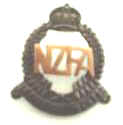 |
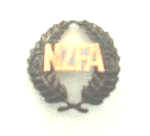 |
As
these images show there were also New Zealand Field Artillery
Reinforcements badges. The badge on the far left carries the word
"REINFORCEMENTS" in the scroll |
The following listing of reinforcements is included to provide some background on the badges used.
NEW ZEALAND EXPEDITIONARY FORCE INFANTRY REINFORCEMENTS
| Dates of Departure from New Zealand |
|
| Main Body including 1st Reinforcements |
16 Oct. 1914 |
| 2nd Reinforcements |
14 Dec. 1914 |
| 3rd Reinforcements |
14 Feb. 1915 |
| 4th Reinforcements |
17 April 1915 |
| 5th Reinforcements |
13 June 1915 |
| 6th Reinforcements |
14 Aug. 1915 |
| Advance Party - 1st & 2nd Battalions N.Z.
Rifle Brigade |
18 Sept. 1915 |
| 7th Reinforcements 1st Reinforcements to
1st & 2nd Battalions N.Z. Rifle Brigade |
9 Oct. 1915 |
| 8th Reinforcements 2nd Reinforcements to
1st & 2nd Battalions N.Z. Rifle Brigade |
13 Nov. 1915 |
| 9th Reinforcements 3rd Reinforcements to
1 st & 2nd Battalions & Advance Party of 3rd & 4th Battalions N.Z. Rifle Brigade.3rd & 4th Battalions, plus
1 st Reinforcements to 3rd & 4th 5 Feb. 1916 Battalions N.Z. Rifle Brigade. |
8 Jan 1916 |
| 10th Reinforcements
4th Reinforcements to 1st & 2nd Battalions N.Z. Rifle Brigade |
4 Mar. 1916 |
11th Reinforcements
5th Reinforcements to 1st & 2nd Battalions N.Z. Rifle Brigade
2nd Reinforcements to 3rd & 4th Battalions N.Z. Rifle Brigade |
I April 1916 |
| 12th Reinforcements First Draft
6th Reinforcements to 1st Battalion N.Z. Rifle Brigade |
I May 1916 |
12th Reinforcements Second Draft
6th Reinforcements to 2nd Battalion plus
3rd Reinforcements to 3rd & 4th Battalions N.Z. Rifle Brigade |
6 May 1916 |
13th Reinforcements 7th Reinforcements to
1st & 2nd Battalions plus
4th Reinforcements to 3rd & 4th Battalions N.Z. Rifle Brigade. |
27 May 1916 |
14th Reinforcements 8th Reinforcements to
1st & 2nd Battalions plus
5th Reinforcements to 3rd & 4th Battalions N.Z. Rifle Brigade |
26 June 1916 |
15th Reinforcements First Draft
9th Reinforcements to 2nd Battalion plus
6th Reinforcements to 3rd Battalion N.Z. Rifle Brigade |
26 July 1916 |
15th Reinforcements Second Draft
9th Reinforcements to Ist Battalion plus
6th Reinforcements to 4th Battalion N.Z. Rifle Brigade |
29 July 1916 |
| 16th Reinforcements First Draft
10th Reinforcements to 1st & 2nd Battalions N.Z. Rifle Brigade |
19 Aug. 1916 |
| 16th Reinforcements Second Draft
7th Reinforcements to 4th Battalion N.Z. Rifle Brigade |
20 Aug. 1916 |
| 16th Reinforcements Third Draft
7th Reinforcements to 3rd Battalion N.Z. Rifle Brigade |
21 Aug. 1916 |
| 17th Reinforcements First Draft
8th Reinforcements to 3rd & 4th Battalions N.Z. Rifle Brigade |
23 Sept 1916 |
| 17th Reinforcements Second Draft
11th Reinforcements to 1st & 2nd Battalions N.Z. Rifle Brigade |
25 Sept 1916 |
Each reinforcement leaving New Zealand consisted of several companies. The Rifle Brigade reinforcements listed above were combined with the infantry reinforcement numbers, which sailed at the same time, but given different company letters. This will now be explained in more detail, as the majority of these badges bore a company letter, as well as a reinforcement number.
These first four letters applied all the way through. Each of the 1st to the 6th reinforcements were made up of A B C & D companies of infantry only.
With later reinforcements, the letters E to J were not used consistently for the same type of unit.
e.g. As from the 21st reinforcement E & F were infantry companies.
The 12th reinforcement consisted of A B C & D companies of infantry, E F G H companies of the N.Z. Rifle Brigade, and J company, Wellington infantry battalion, reinforcements.
The 13th to 16th reinforcements were similar to the 12th, except that J company
was an infantry reinforcement.
It should be noted at this point, that as
the soldiers ordered their badges according to individual preference from the selection of frames
available, the designs can vary, even within the same company, hence the wide variety. The hat badges of group (A), were also used in conjunction with collar badges of group (B) by some soldiers.
Infantry Reinforcement Basic Frame Types of Hat Badges
The following information on the basic frames of hat badges illustrated, and individually numbered, has been compiled from photographic evidence of the badges having been worn on actual uniforms, together with a knowledge of the units which
traveled on each reinforcement; rather than from badges existing in individual collections.
 |
-
Type No. 1
-
Numbered for reinforcements I to 3. Reinforcement number
1 sailed with the Main Body. This type appears to have been mainly worn as a collar badge, and some had a scroll underneath, with the word, "Reinforcement".
-
The scroll also exists, for reasons unknown, with the words, "England", "France", and "Russia".
|
|

|
|
 |
|
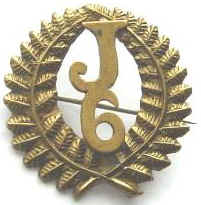 |
|
 |
|
 |
|
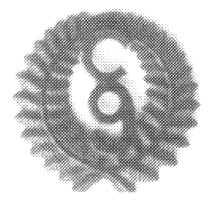 |
|
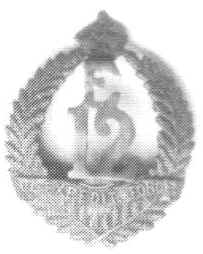 |
|
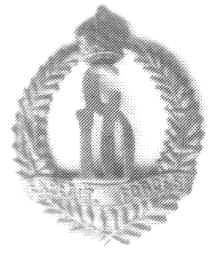 |
-
Type No. 9
-
This type has "N" and "T' on the fern leaves, and
"EXPEDIT. FORCES-, on scroll, and was worn by reinforcements § to 16.
|
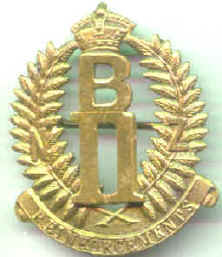 |
|
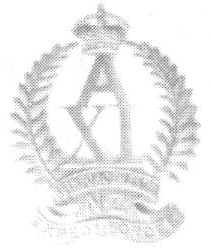 |
|
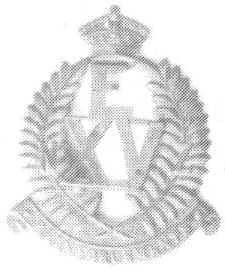 |
|
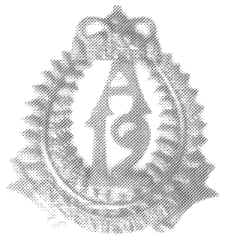 |
|
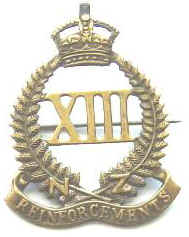 |
|
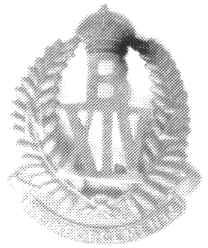 |
|
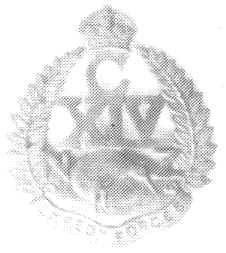 |
|
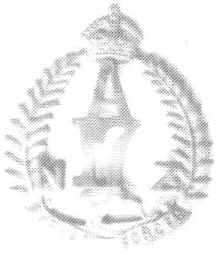 |
|
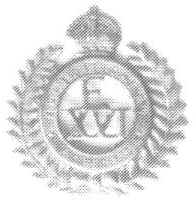 |
|
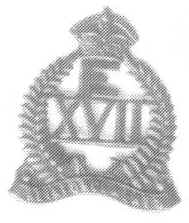 |
|
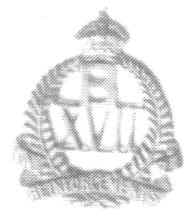 |
|
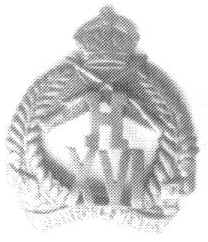 |
|
It is not within the scope of this article to explore relative rarity. However, it will be seen that the different types appear more or less in sequence, and that these badges did not become really popular until about the 7th reinforcement.
In the majority of badges, the reinforcement number and company letter has been superimposed by the manufacturer, on to a basic frame, by the use of a separate letter joined to a number, such B/12. But the first badge produced for some types was made in one piece, eg types 11, 14, 16, 18, 19 and 20. It is quite possible that the highest numbers shown may have been exceeded in some cases.
It is hoped that this article will be of use to historians and collectors, and will no doubt provoke and provide
some interesting points for discussion, and will it is hoped produce further evidence in this field.
-
Appreciation is expressed to Laurie Osborne for a record of his extensive collection.
-
The writer would be most interested to hear from readers with information on unusual reinforcement badges, for possible inclusion in future articles. Please send details and pencil rubbings, if possible, to: PO Box 39-254, Auckland West.
as published in the journal
of the NZ Military Historical Society, June 1984 |